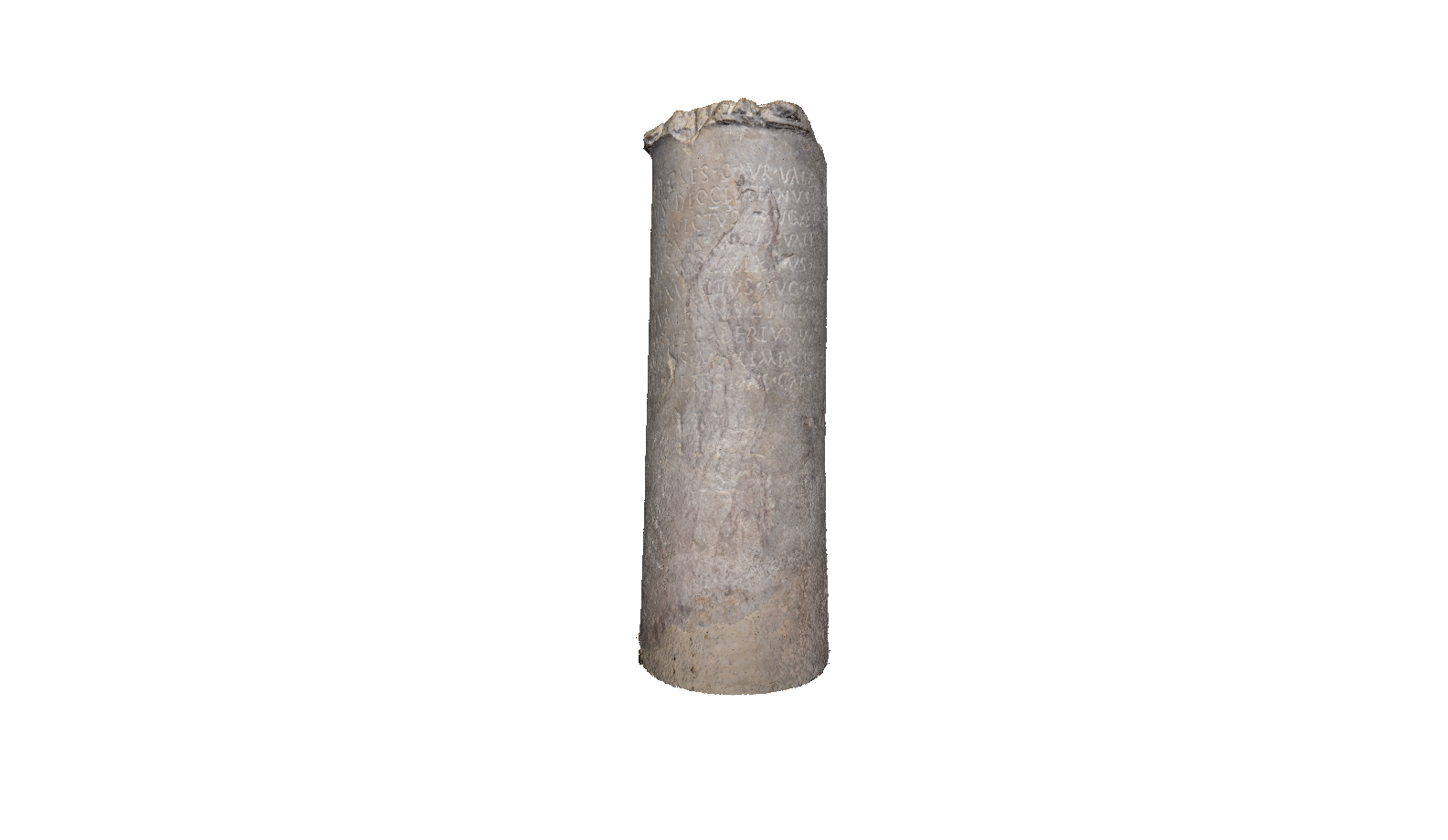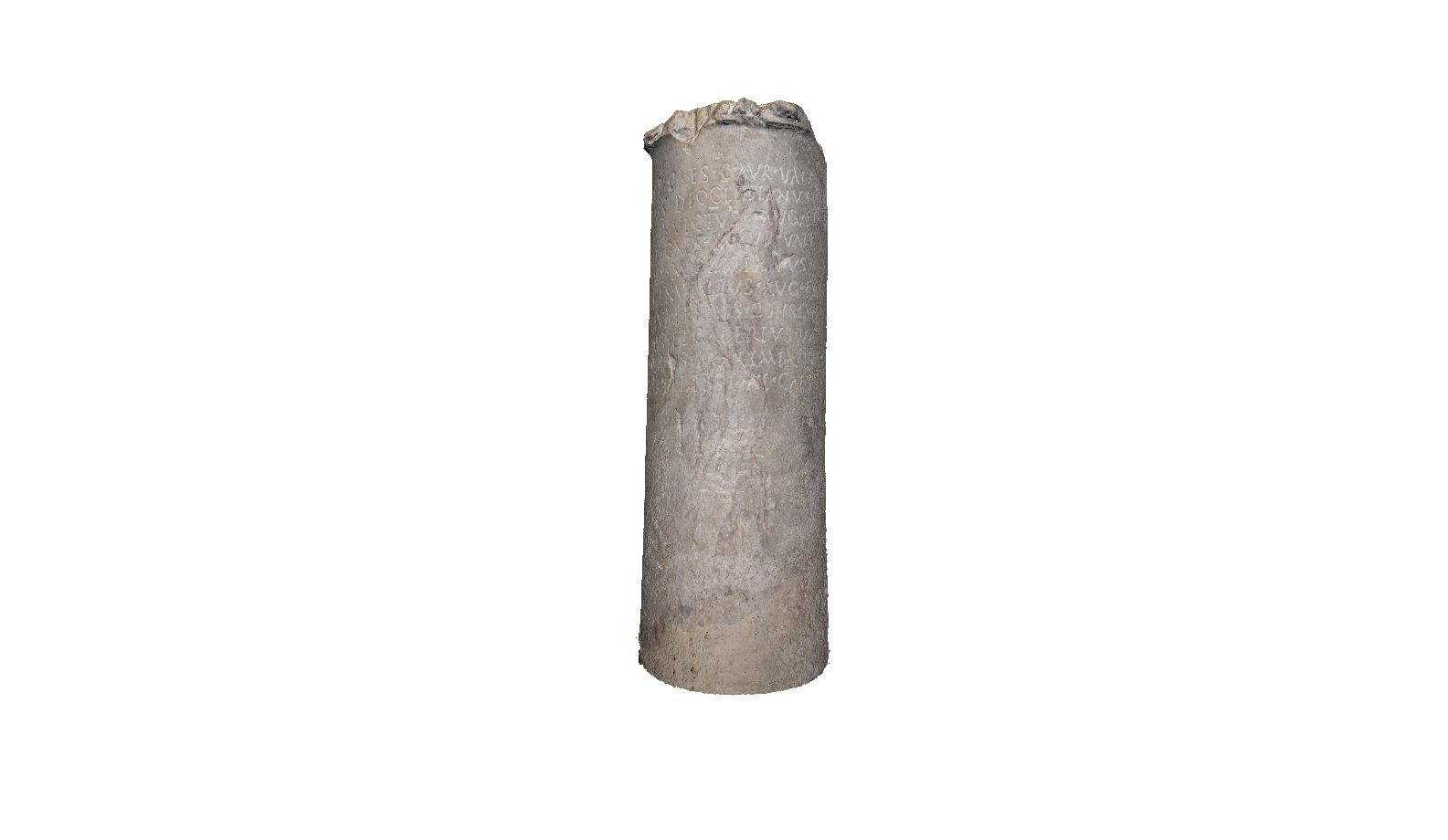Description
Click on the image to go full screen
This column, made of veined marble, was found in Camin (Padua) in the late 19th and early 20th century and acquired by the Museo Civico in 1919. It is a miliare, a stone marker that in Roman times, starting in the 3rd-2nd century B.C., was placed at the edge of the roadway every mile, hence the name. Milium is the Roman mile, corresponding to mille passuum, a thousand Roman steps, approximately 1480 metres. These markers were useful to indicate information about the road system, especially along consular roads: on each one was engraved the distance from the starting point of the road or, in later times, from the nearest town to the point where it was located, as well as the distance to the end of the road (hence the saying that all roads lead to Rome). The distance was not always respected because milestones were often concentrated at strategic points of a road (for example at crossroads or exits). It was also always specified which magistrate or emperor had built that stretch of road or restored it, a factor that allows individual milestones to be dated very precisely.
The milestone of Camin has an inscription that begins with the titling of the emperor Diocletian and also recalls the other three personalities of Galerius, Constantius and Maximian; together they make up the first tetrarchy (the government of four) at the end of the 3rd century AD, which suggests a secure date of 293-305 AD.
The last element engraved on the milestone is the number 'III', which refers to the three miles from the Roman centre of Padua to the hamlet of Camin. The milestone was probably located along a very important consular road, the Via Annia, which from the 2nd century B.C. connected Aquileia to Adria following the lagoon profile and passing through Concordia Sagittaria, Altino and Padua, before continuing southward.

